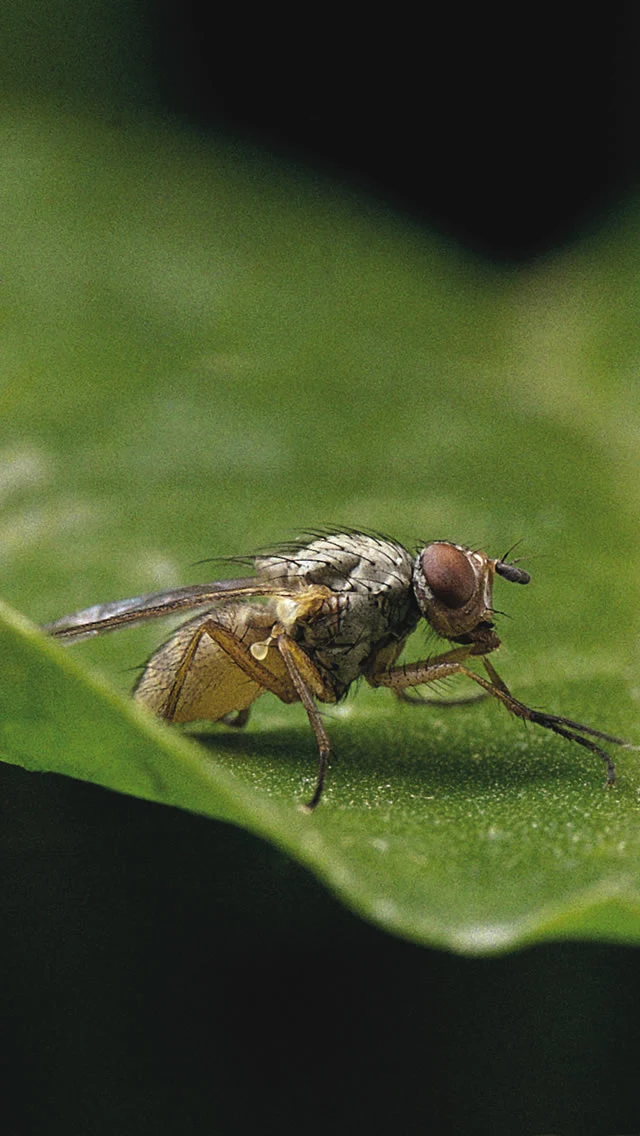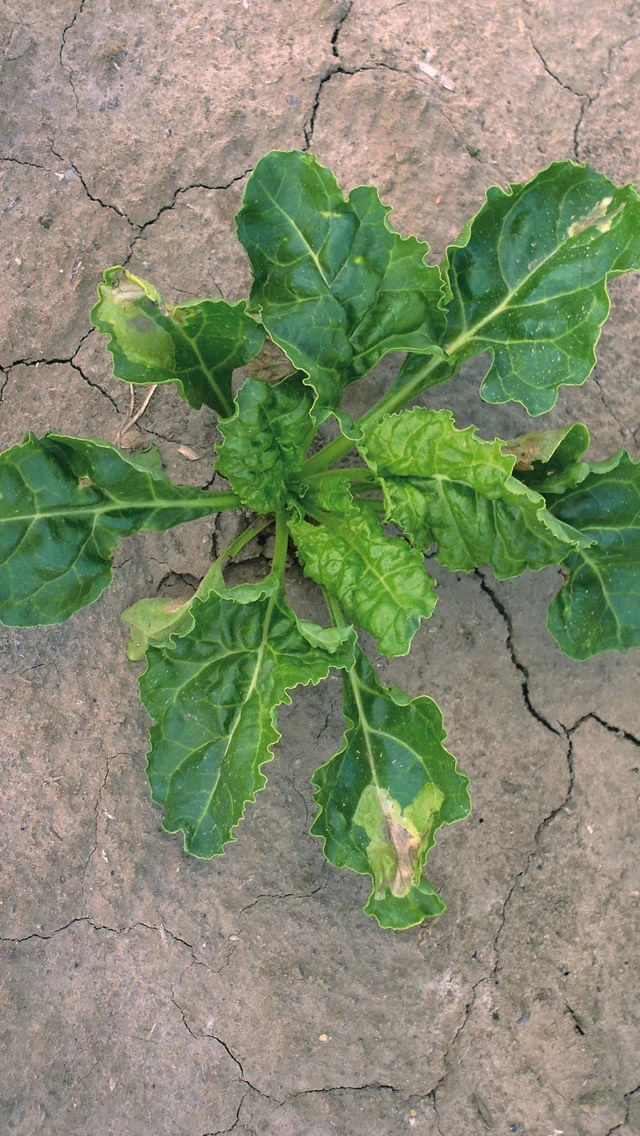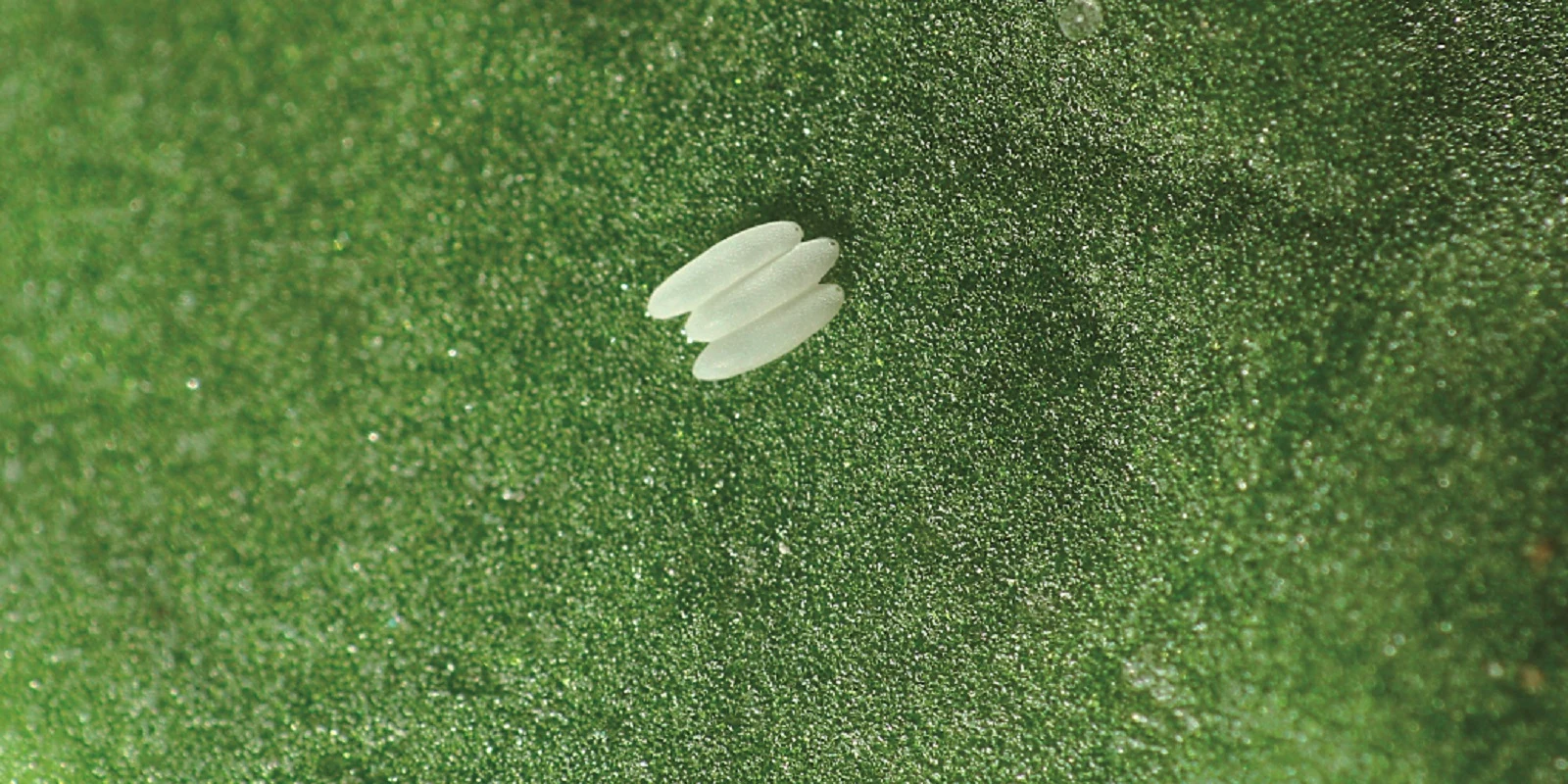
Mangold fly - beet leaf miner
Pegomya hyoscyami

Pegomya hyoscyami
Identification
The adult mangold flies are up to 7 mm long with greyish/brown bodies. The maggots (referred to as ‘beet leaf miners’) are legless, without clearly defined heads and are 6-7 mm long with semi-transparent bodies which are predominantly white in colour.
Symptoms
The first signs of beet leaf miner activity are small white elongated eggs, approximately 1 mm long, attached to the undersides of leaves or cotyledons. These are usually found in groups of 2-10 placed side by side.
The tunneling activity of the maggots is readily visible as blisters, with a pale silvery appearance, which can make the beet plants more susceptible to herbicide damage. Plant vigour can also be slowed or checked. Very heavy infestations can kill young plants.
Life-cycle
The first mangold flies usually take to the air in April and early May which coincides with early herbicide timings. After successfully mating eggs are laid on the undersides of leaves. After hatching the maggots burrow into the leaves and live between the upper and lower surfaces and when fully fed they exit the leaves and pupate in the soil where they overwinter. There can be 2-3 generations per year.
Importance
First generation attacks on young plants can be damaging. Later invasions of more established plants are of less concern as the maggots largely exist on the outer leaves which are of little economic importance. The new generation of insecticide seed treatments can give effective and reliable protection against leaf miner damage.

Beet leaf miner damage

Beet leaf miner eggs ©Blackthorn Arable Ltd.


